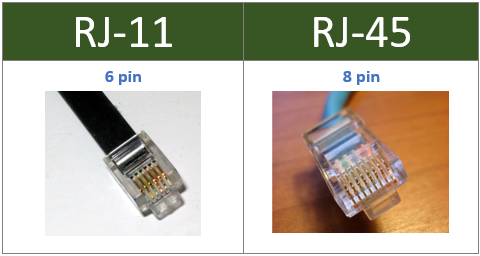RJ45 Vs RJ11

RJ45 and RJ11 are both types of connectors used in networking and telecommunications, but they serve different purposes and have distinct features.
RJ11
First, let's talk about RJ11. RJ11 connectors are commonly used for telephone connections. They have four or six wires inside and are smaller in size compared to RJ45 connectors. RJ11 connectors are used to plug in telephones, fax machines, and modems to connect to the telephone network. They are often found in homes and offices where people need to make phone calls or connect to the internet via dial-up connections.
RJ45
On the other hand, RJ45 connectors are larger and have eight wires inside. They are used for Ethernet connections, which are commonly used in computer networks to transfer data between devices. RJ45 connectors are used to connect computers, routers, switches, and other networking devices to create a local area network (LAN) or to connect to the internet. They are widely used in homes, offices, schools, and businesses for networking purposes.
Difference between RJ11 and RJ45
One key difference between RJ11 and RJ45 connectors is their size and the number of wires they contain. RJ11 connectors are smaller and have fewer wires, making them suitable for telephone connections. RJ45 connectors are larger and have more wires, making them suitable for Ethernet connections and high-speed data transfer.
In summary, RJ11 connectors are used for telephone connections, while RJ45 connectors are used for Ethernet connections and networking. They have different sizes and wire configurations to suit their respective purposes. Understanding the differences between RJ11 and RJ45 connectors helps us choose the right type of connector for our specific needs, whether it's making phone calls or setting up a computer network.
Comments
Post a Comment